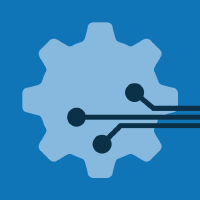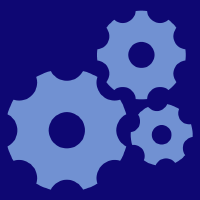Topic Menu
► Topic MenuTopic Editors


Recent Advances in Robotics and Networks
Topic Information
Dear Colleagues,
There have been more and more notable developments relating to robotics in many applications, such as minimally invasive surgery, computer-aided manufacturing, and unmanned vehicles, especially with industry 4.0 digital transformation. Autonomous systems will further progress with the development of Artificial Intelligence. Intelligent computing solutions are suitable for a growing number of real-world applications. Meanwhile, computer networks have been covering more areas of our daily life, especially with 4G, 5G and 6G wireless network solutions. The data collection, communication and storage capabilities of communication systems are progressively improving. However, existing robotic and networking techniques are still facing great challenges, from the interpretation of intelligence to security. Therefore, this Topic is looking for high-quality, original research articles that advance the fields of robotics and networks towards more secure, intelligent, capable, autonomous, communicating systems.
Dr. Xiaochun Cheng
Prof. Dr. Daming Shi
Topic Editors
Keywords
- Augmented-Reality-Assisted Surgical Robots
- Intelligent Robotic Technologies
- Deployment of Autonomous Weapons in the Military
- Legal and Ethical Perspectives on Robotics
- Privacy and Security Issues Relating to Robotics
- Cooperation and Communication for Multi-robot System
- Advance Algorithms for Network Security
- Advanced Computing for Robotics
- IoT-based Smart Home
- IoT-based Intelligent Building
- Smart Transportation Systems
- IoT-based Smart City
- Sensor based Industry 4.0
- Autonomous Communicating Systems
Participating Journals
| Journal Name | Impact Factor | CiteScore | Launched Year | First Decision (median) | APC |
|---|---|---|---|---|---|

Automation
|
2.0 | 4.1 | 2020 | 23.4 Days | CHF 1200 |

Machines
|
2.5 | 4.7 | 2013 | 16.9 Days | CHF 2400 |

Robotics
|
3.3 | 7.7 | 2012 | 21.8 Days | CHF 1800 |

Sensors
|
3.5 | 8.2 | 2001 | 19.7 Days | CHF 2600 |

Preprints.org is a multidisciplinary platform offering a preprint service designed to facilitate the early sharing of your research. It supports and empowers your research journey from the very beginning.
MDPI Topics is collaborating with Preprints.org and has established a direct connection between MDPI journals and the platform. Authors are encouraged to take advantage of this opportunity by posting their preprints at Preprints.org prior to publication:
- Share your research immediately: disseminate your ideas prior to publication and establish priority for your work.
- Safeguard your intellectual contribution: Protect your ideas with a time-stamped preprint that serves as proof of your research timeline.
- Boost visibility and impact: Increase the reach and influence of your research by making it accessible to a global audience.
- Gain early feedback: Receive valuable input and insights from peers before submitting to a journal.
- Ensure broad indexing: Web of Science (Preprint Citation Index), Google Scholar, Crossref, SHARE, PrePubMed, Scilit and Europe PMC.

